Purple Mold on Food, on Wall or on Wood. Symptoms. Is Purple Mold Dangerous? Purple Mildew.
Mold is an unwelcome guest in any home, and it comes in various colors, such as black, green, and even purple. Read The Complete Guide to Purple Mold: Identification, Prevention, and Remediation! This article focuses on purple mold, a lesser-known but equally important type of mold that homeowners should be aware of. Dealing with mold promptly and effectively is crucial, as it can lead to health problems and damage your property.
What is Purple Mold and Its Types?
Purple mold is a fungus that appears in shades of purple, often accompanied by a musty smell. This mold can grow on various surfaces, including food, walls, and ceilings. It thrives in damp, humid conditions, making it essential to keep your home dry and well-ventilated. Let’s take a closer look at the common types of purple mold.
Contents
- What is Purple Mold and Its Types?
- Common Areas Where Purple Mold Can Be Found
- Dangers and Toxicity of Purple Mold
- Identifying Purple Mold
- DIY Solutions for Removing Purple Mold
- Safety Precautions and Professional Help
- General Tips for Preventing Purple Mold Growth
- Specific Prevention Measures for Each Common Area
Definition and types of purple mold
- Phanerochaete Crassa: This type of mold is commonly found on decaying wood, both outdoors and indoors. It has a purple-to-violet appearance and can cause structural damage if left untreated.
- Gibberella: Also known as Fusarium, this mold typically grows on plants and crops but can also be found in homes. It produces purple, pink, or red pigmentation and is known to cause various plant diseases. In rare cases, it can lead to human infections.
- Phoma glomerata: This purple mold is often found on damp walls, ceilings, and other surfaces within homes. If not addressed, it thrives in high humidity and can contribute to respiratory and other health problems.
In the following sections, we will discuss the common areas where purple mold can be found, its dangers and toxicity, and how to identify and treat it. We will also share prevention tips to help you keep your home mold-free.
Common Areas Where Purple Mold Can Be Found
 Purple mold can grow in various areas within your home or property, mainly with high moisture and humidity levels. This section will discuss the common areas where purple mold can be found and why these areas are particularly susceptible to mold growth.
Purple mold can grow in various areas within your home or property, mainly with high moisture and humidity levels. This section will discuss the common areas where purple mold can be found and why these areas are particularly susceptible to mold growth.
Areas susceptible to purple mold growth
| Area | Reason for Susceptibility |
|---|---|
| Food | Mold thrives in damp, dark environments and can grow on perishable food items, particularly if not stored properly. For example, purple mold can be found on bread, fruits, vegetables, and other organic materials. |
| Wood | Wooden surfaces and structures, such as furniture and building materials, can absorb moisture and provide an ideal environment for purple mold growth. It can lead to structural damage if left untreated. |
| Floor | Floors, particularly in basements and bathrooms, can become damp due to poor ventilation or water leaks, creating a suitable environment for purple mold growth. Carpets and rugs can also harbor mold spores. |
| Concrete | Concrete surfaces, such as walls and floors, can absorb and retain moisture, allowing mold to grow. Purple mold can develop on concrete surfaces in damp basements, crawl spaces, or poorly ventilated areas. |
| Ceiling | Ceilings can develop mold if there is a roof leak or poor ventilation, resulting in moisture buildup. It can cause purple mold to grow on ceiling materials’ visible and hidden sides. |
| Drywall | Drywall can absorb moisture, making it susceptible to mold growth. Purple mold can develop on drywall in areas with high humidity, water leaks, or condensation, such as bathrooms, kitchens, and basements. |
Understanding where purple mold is likely to grow can help you detect and address mold issues early, preventing potential health problems and property damage. In the next section, we will discuss the dangers and toxicity of purple mold and how it can impact your health.
Dangers and Toxicity of Purple Mold
The dangers and toxicity of purple mold should not be underestimated, as exposure to this type of mold can lead to various health problems. This section will discuss the toxicity levels of purple mold and the health risks associated with exposure.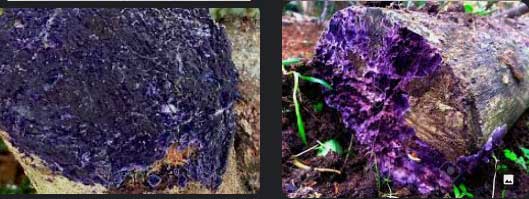
Toxicity levels of purple mold
Different types of purple mold have varying levels of toxicity. However, some of the most common types of purple mold include Phanerochaete Crassa, Gibberella, and Phoma glomerata. While not all purple molds are toxic, it is crucial to know the potential dangers and take necessary precautions.
| Mold Type | Toxicity Level |
|---|---|
| Phanerochaete Crassa | This type of purple mold is generally considered non-toxic, but it can still cause allergic reactions in sensitive individuals. |
| Gibberella | Gibberella can produce mycotoxins, toxic compounds that can cause various health problems, including respiratory issues and immune system suppression. |
| Phoma glomerata | Phoma glomerata is generally considered non-toxic but can cause allergic reactions in some people. |
Health risks associated with purple mold exposure
Exposure to purple mold, especially the toxic varieties, can result in a range of health issues. Some of the most common health risks associated with purple mold exposure include:
- Allergic reactions: Purple mold can trigger allergic reactions in sensitive individuals, causing symptoms such as sneezing, runny nose, itchy eyes, and skin irritation.
- Respiratory problems: Exposure to mold spores can lead to respiratory issues, including coughing, wheezing, and shortness of breath. It can be hazardous for people with asthma or other pre-existing respiratory conditions.
- Immune system suppression: Some types of purple mold, such as Gibberella, produce mycotoxins that can suppress the immune system, making individuals more susceptible to infections and other health problems.
- Irritation of the eyes, nose, and throat: Exposure to mold spores can irritate the eyes, nose, and throat, leading to discomfort and potentially more severe issues if left untreated.
It is essential to address any mold problems promptly to minimize the risk of health issues and property damage. The following sections will discuss practical ways to identify, prevent, and remediate purple mold in your home or property.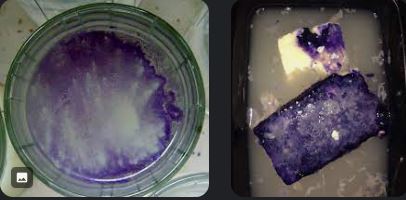
Identifying Purple Mold
Identifying purple mold is essential in addressing the problem and preventing potential health issues. In this section, we will discuss how to differentiate purple mold from other types of mold and the signs indicating its presence.
Comparison to other types of mold
It’s crucial to distinguish purple mold from other common mold types, such as Aspergillus, Penicillium, and toxic mold. Here’s a brief comparison:
| Mold Type | Description and Common Locations |
|---|---|
| Purple Mold | Purple or violet hues may be fuzzy or slimy in texture. Commonly found on food, wood, floors, concrete, ceilings, and drywall. |
| Aspergillus Mold | Typically green, yellow, or black; it can also be various other colors. Grows in a circular pattern. Commonly found on damp or water-damaged materials, wallpaper, insulation, and HVAC systems. |
| Penicillium Mold | Often blue or green and may have a velvety texture. Commonly found on damp materials, wallpaper, insulation, carpets, or water-damaged furniture. |
| Toxic Mold | Often black or dark green, but it can also be other colors. Toxic mold refers to molds that produce mycotoxins. Commonly found on damp or water-damaged materials, basements, crawlspaces, bathrooms, kitchens, and air conditioning systems. |
Signs of purple mold presence
To identify purple mold, pay attention to the following visual cues and smells:
- Visual cues: Look for purple or violet hues on various surfaces, such as food, wood, floors, concrete, ceilings, and drywall. Purple mold can appear fuzzy or slimy, depending on the type and the surface it’s growing on. It may also grow in clusters or spread out over the affected area.
- Smell: Purple mold may produce a musty, damp odor that can be more noticeable in confined spaces. If you detect a persistent, unexplained smell, it could be a sign of mold growth, and you should investigate further.
By accurately identifying purple mold and understanding how it differs from other mold types, you can take appropriate steps to address it and protect your health and property. The following sections will discuss practical ways to prevent and remediate purple mold infestations.
DIY Solutions for Removing Purple Mold
It is often possible to address purple mold infestations using readily available household products. This section will cover five effective DIY solutions for removing purple mold from various surfaces.
Household bleach (Clorox)
Household bleach, such as Clorox, is an effective mold removal agent. Mix one part bleach with ten parts water, creating a diluted solution. Apply the mixture to the affected area using a sponge or cloth, ensuring the mold is covered entirely. Let it sit for 10-15 minutes before scrubbing away the mold with a brush. Rinse with water and dry the surface thoroughly to prevent mold regrowth.
Hydrogen peroxide
Hydrogen peroxide is a powerful, non-toxic mold remover. Pour 3% hydrogen peroxide into a spray bottle and apply directly onto the mold. Allow it to sit for at least 10 minutes, then scrub away the mold with a brush. Finally, wipe the area clean and allow it to dry.
Baking soda
Baking soda is a mild, natural cleaner that can help remove purple mold. Combine one part baking soda with two parts water, creating a paste. Apply the paste to the moldy surface and let it sit for 10-15 minutes. Scrub the area with a brush or sponge, then rinse with water and dry thoroughly.
White vinegar
White vinegar is a practical, non-toxic mold remover. Pour undiluted white vinegar into a spray bottle and apply it to the moldy area. Allow it to sit for at least 30 minutes, then scrub it with a brush or sponge. Wipe the area clean and allow it to dry.
Borax
Borax is a natural cleaner and fungicide that can help remove mold. Mix one cup of borax with one gallon of water, creating a solution. Apply the solution to the moldy area using a sponge or cloth, then scrub away the mold. Wipe the area clean, but do not rinse, as the borax residue will help prevent mold regrowth.
These DIY solutions can effectively remove purple mold from various surfaces in your home. However, if the mold infestation is extensive or the mold returns after cleaning, it is advisable to consult a professional mold remediation expert to ensure the issue is fully resolved.
Safety Precautions and Professional Help
When dealing with purple mold, taking the necessary safety precautions and knowing when to call in professional help is essential. This section will discuss the safety measures one should follow when removing mold and the criteria for determining when professional intervention is required.
Safety precautions when removing mold
Safety should always be a top priority when removing mold. Here are some precautions to follow during the mold removal process:
- Wear protective gear: Wear gloves, goggles, and a mask (preferably an N95 respirator) to protect yourself from inhaling mold spores or touching mold with your bare hands.
- Ensure proper ventilation: Open windows and doors to allow fresh air to circulate and help disperse mold spores. It can also help reduce the strong odors produced by some cleaning solutions.
- Avoid mixing chemicals: Mixing specific cleaning agents, such as bleach and ammonia, can produce harmful fumes. Stick to one cleaning solution at a time to avoid adverse reactions.
- Protect your belongings: Remove or cover any items in the affected area that could be damaged by cleaning solutions or mold spores.
- Dispose of moldy materials properly: Moldy items, such as clothing or porous materials, should be placed in sealed plastic bags before being discarded.
When to call professionals
While DIY solutions can be effective in some cases, there are instances where professional intervention is necessary. The following criteria can help determine when to call for professional help: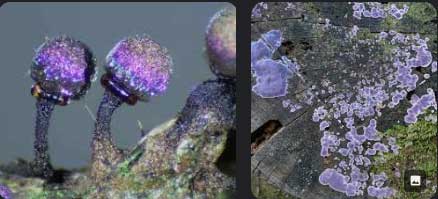
- Extensive mold growth: It is best to consult a professional if the mold infestation covers a large area (typically more than 10 square feet).
- Recurring mold issues: If mold returns after multiple cleaning attempts, a professional mold remediation service can help identify and address the underlying cause of the case.
- Health concerns: Individuals with compromised immune systems, respiratory issues, or allergies may be at a higher risk of adverse health effects from mold exposure. In such cases, professional assistance is recommended.
How to find and choose a reliable mold remediation service
When looking for a reliable mold remediation service, consider the following tips:
- Ask for recommendations: Seek advice from friends, family, or colleagues who have had positive experiences with mold remediation services.
- Check credentials: Ensure the mold remediation company is licensed, insured, and certified by a reputable organization, such as the Institute of Inspection, Cleaning, and Restoration Certification (IICRC).
- Request references: A reliable company should be able to provide references from previous clients.
- Get multiple quotes: Obtain quotes from at least three companies to compare services and pricing.
- Inquire about warranties or guarantees: Some mold remediation companies may offer warranties or guarantees on their work, providing peace of mind and assurance of quality service.
By following these guidelines, you can ensure a safe and effective mold removal process and know when to call professional help to address more severe or persistent mold issues.
General Tips for Preventing Purple Mold Growth
Preventing mold growth in your home is crucial to maintaining a healthy living environment. In this section, we will discuss general tips for preventing purple mold growth, including regular cleaning and disinfection, proper moisture control, humidity regulation, adequate ventilation, and maintenance of household systems.
Regular cleaning and disinfection
Consistent cleaning and disinfection of surfaces in your home can help prevent the growth of purple mold. Pay special attention to moisture-prone areas, such as bathrooms and kitchens. Use a disinfectant cleaner to kill mold spores and remove any organic material that may support mold growth.
Proper moisture control
Moisture is crucial in mold growth, so controlling it is essential. Fix leaks promptly, clean up spills, and ensure water does not accumulate in your home. Use a dehumidifier in damp areas to help maintain an appropriate moisture level.
Humidity regulation
High humidity levels can promote mold growth. Aim to maintain indoor humidity levels between 30% and 50% to reduce the likelihood of mold development. Use a hygrometer to monitor humidity levels and adjust as needed with the help of air conditioners or dehumidifiers.
Adequate ventilation
Proper ventilation can help prevent mold growth by reducing moisture and improving air circulation. Open windows and doors when possible, and use exhaust fans in kitchens and bathrooms to remove excess water. Additionally, ensure that your home’s ventilation system is functioning correctly and is free of obstructions.
Maintenance of household systems
Regular maintenance of household systems, such as plumbing and HVAC, can help prevent conditions that promote mold growth. Inspect your home for signs of leaks, dampness, or water damage regularly, and address issues as they arise. Keep gutters and downspouts clean and ensure proper drainage around your home to prevent water pooling near the foundation.
Following these general tips can help prevent purple mold growth in your home and maintain a healthier living environment. In addition, prioritizing regular cleaning, moisture control, humidity regulation, ventilation, and system maintenance can go a long way in keeping mold at bay.
Specific Prevention Measures for Each Common Area
Specific prevention measures in various areas of your home can further minimize the risk of purple mold growth. This section will explore strategies for food storage, wood treatment and maintenance, flooring and concrete care, and ceiling and drywall maintenance.
Food storage tips
Proper food storage can help prevent purple mold growth in your pantry and kitchen. Keep the following tips in mind:
- Store food in airtight containers to avoid exposure to moisture and mold spores.
- Regularly inspect perishable items and discard any moldy or spoiled food.
- Keep pantry shelves and refrigerator surfaces clean and dry.
- Ensure proper air circulation in storage areas, such as cabinets and pantries.
Wood Treatment and Maintenance
Wooden surfaces and materials can be susceptible to mold growth. Take these measures to protect and maintain the wood in your home:
- Regularly inspect wooden surfaces for signs of moisture or mold.
- Use mold-resistant paint or sealant on wooden surfaces.
- Address water damage and leaks promptly to prevent wood rot.
- Keep wooden surfaces clean and dry.
Flooring and concrete care
Mold can grow on flooring materials, including carpets and concrete. To protect your floors, consider these steps:
- Regularly clean carpets and flooring to remove dirt and debris that could support mold growth.
- Use a dehumidifier to reduce moisture in damp areas, such as basements.
- Ensure proper drainage in concrete areas, such as patios and driveways.
- Address water damage or leaks promptly to prevent mold growth on floors.
Ceiling and drywall maintenance
Ceilings and drywall can also harbor mold growth. Maintain these areas with the following tips:
- Inspect ceilings and walls for signs of water damage or mold.
- Use mold-hydrogen peroxide paint or primer on ceilings and walls.
- Address roof leaks or plumbing issues that could lead to water damage.
- Ensure proper ventilation to reduce moisture buildup in these areas.
Conclusion
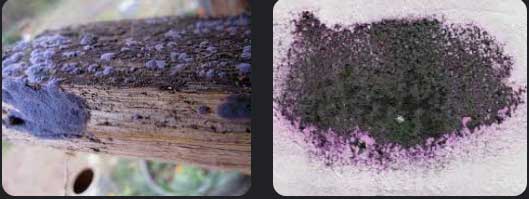 Dealing with purple mold effectively is vital for maintaining a healthy living environment. By implementing the tips and strategies in this article, you can minimize mold growth in your home and protect your family’s well-being. Remember, prevention is critical. Regular cleaning, moisture control, and targeted prevention measures in specific areas will go a long way in keeping mold at bay. So don’t wait—take action today and create a healthier home for you and your loved ones.
Dealing with purple mold effectively is vital for maintaining a healthy living environment. By implementing the tips and strategies in this article, you can minimize mold growth in your home and protect your family’s well-being. Remember, prevention is critical. Regular cleaning, moisture control, and targeted prevention measures in specific areas will go a long way in keeping mold at bay. So don’t wait—take action today and create a healthier home for you and your loved ones.
References
Here are some recommended books available on Amazon that can provide further information on mold prevention and remediation:
- Mold: The War Within by Kurt and Lee Ann Billings – This book offers insights into mold-related health issues and practical solutions for dealing with mold in your home.
- The Mold Survival Guide: For Your Home and Your Health by Jeffrey C. May and Connie L. May – This book provides valuable information on identifying, addressing, and preventing mold growth in your home.
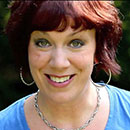
Margarita Alexieva is a highly respected figure in the realm of journalism. Her diverse background spans numerous newspapers and magazines, where she’s crafted a multitude of pieces ranging from investigative journalism to enlightening editorials. Not only confined to print media, Margarita’s media experience also encompasses regional television stations, where her powerful storytelling abilities have resonated with a wide audience. As a dedicated journalist, Margarita’s work consistently reflects her commitment to accuracy, fairness, and an unwavering dedication to shedding light on vital issues. Her significant contributions to the media landscape continue to inform, inspire, and engage readers and viewers alike.
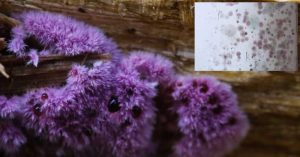
I have to disagree with the idea that bleach is always effective against purple mold. It can sometimes make the problem worse, especially on porous surfaces where it doesn’t reach the mold’s roots.
While this article provides helpful information, it’s important to mention that mold-resistant paint isn’t foolproof. Even with such color, proper moisture control and ventilation are necessary to prevent mold growth.
I appreciate the prevention tips, but it’s crucial to emphasize the importance of using air purifiers with HEPA filters. They can help capture mold spores and improve indoor air quality for those with mold allergies.
The article doesn’t stress the potential health risks associated with DIY mold removal. Sometimes, it may be best to consult a professional immediately rather than attempting removal alone.
RemediationRita: While the DIY solutions mentioned can be helpful, they may only sometimes be sufficient. It’s essential to monitor the situation after treatment and call in professionals if the mold returns or spreads.